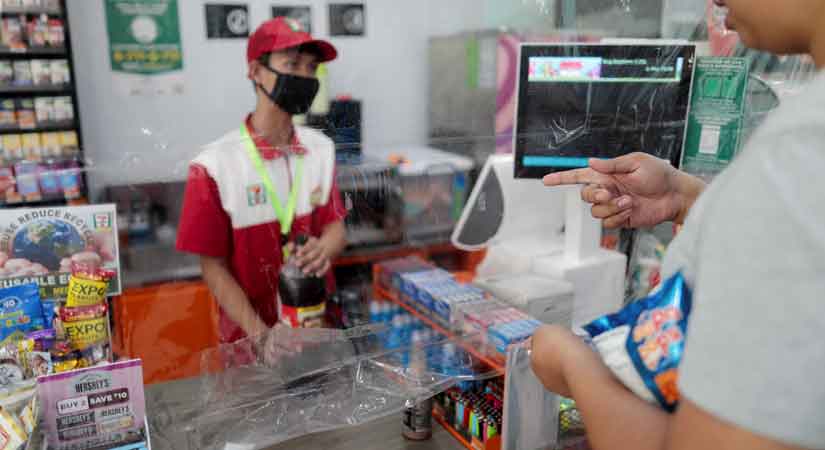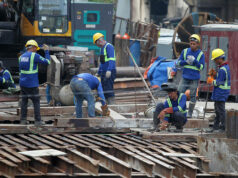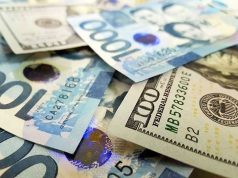Inflation quickens to 2.5% in June

THE overall year-on-year increase in prices of widely used goods accelerated in June after four straight months of slowing down, the Philippine Statistics Authority (PSA) said on Tuesday.
Preliminary data from the PSA showed headline inflation at 2.5% last month, picking up from 2.1% in May, but still slower than 2.7% in June 2019.
The latest headline figure is higher than the 2.2% median in a BusinessWorld poll late last week and falls within the 1.9-2.7% estimate by the Bangko Sentral ng Pilipinas (BSP) for June.
Year to date, inflation settled at 2.5%, still within the BSP’s 2-4% target and above the 2.3% forecast for the entire year.
Core inflation, which discounts volatile prices of food and fuel, stood at 3% in June, faster than 2.9% in the previous month, but slower than 3.3% a year earlier. It averaged 3.1% this year.
The PSA noted higher annual increases in transport (2.3% in June from -5.6% in May); alcoholic beverages and tobacco (18.5% from 18%); housing, water, electricity, gas, and other fuels (0.4% from 0.2%); and communications (0.4% from 0.3%).
Meanwhile, the food-alone index posted an inflation of 2.7%, slower than May’s 2.9%.
“The moderate increase in inflation will help in the recovery of consumer demand as the economy gradually reopens,” Acting Socioeconomic Planning Secretary and National Economic and Development Authority (NEDA) Director-General Karl Kendrick T. Chua said in a statement.
In a Viber message to reporters, BSP Governor Benjamin E. Diokno said the result was “consistent with the BSP’s prevailing assessment that inflation pressures remain limited due largely to the adverse impact of the COVID-19 [coronavirus disease 2019] pandemic on domestic and global economic conditions.”
“The BSP remains committed to the use of monetary instruments and regulatory relief measures when needed further in fulfillment of its mandate to promote noninflationary and sustainable growth,” Mr. Diokno said.
In a separate statement, ING Bank N.V. Manila Senior Economist Nicholas Antonio T. Mapa attributed last month’s results to the “slight gain” in food prices and the “normalization” in transport costs.
In an e-mail, Mr. Mapa noted the “swing of transport prices” that reverted to gains after three months of negative price movements.
“Other reasons for the 2.5% inflation print was the food basket, which posted a 2.7% increase in prices over the same period in 2019. Transport costs rebounded mainly due to the recovery in global crude oil prices from the April swoon, but also likely due to the resumption of domestic demand with certain lockdown measures relaxed with the economy gradually reopening,” he added.
University of Asia and the Pacific School of Economics Senior Economist Cid L. Terosa said demand “perked up” due to relaxed quarantine measures.
“More and more people are actively engaged in the market,” he said in an e-mail.
INFLATION IMPACT ON POOR
Meanwhile, inflation for the bottom 30% of income households grew 3%, faster than 2.9% in May, but slower than the 3.1% in June 2019, PSA said.
For the year, the bottom 30% inflation averaged 2.6%.
The consumer price index for the bottom 30% modifies the model basket of goods to reflect the spending patterns of the poor. This compared with the headline CPI, which measures inflation as experienced by the average household.
The inflation uptick for this income segment was brought by the following subindices: transport (4.8% in June from -2.3% in May); alcoholic beverages and tobacco (21.2% from 20.7%); and communication (0.2% from 0.1%).
The food index for poor households eased to 2.1% in June from 2.2% in the previous month.
OUTLOOK
Economists interviewed by BusinessWorld differed on their inflation outlook in the coming months.
“Inflation could slightly pick up in the coming months as economies locally and in many countries worldwide further reopen from lockdowns, which have been eased further starting the latter part of May to June,” Michael L. Ricafort, chief economist at Rizal Commercial Banking Corp. said in a note. This led to a gradual pick up in business and economic activities and the resulting demand and spending activities, which led to higher prices of goods and services,” he added.
Mr. Ricafort added the recent inflation reading “could limit the leeway on local policy rates” but noted the possibility of further cuts in banks’ reserve requirement ratio amid the anticipated contraction in the country’s economic output.
Demand for commodities remains weak despite the acceleration in June, ING Bank’s Mr. Mapa said.
“With domestic demand handicapped by record-high unemployment and economic activity expected to remain tepid up until a vaccine is created, we do not foresee any substantial buildup in demand price pressures in the next couple of quarters. Meanwhile, commodity-induced inflation pressures are also benign with crude oil prices expected to remain subdued with the global economy in the midst of a bitter recession,” Mr. Mapa said.
He added the recent 50-bp (basis point) cut in key interest rates and the “greater part of its actions” early this year will only be felt in the “-ber” months given the “time delay factor” of monetary policy actions.
The PSA estimated the April unemployment rate rose to 17.7%, equivalent to about 7.25 million out of work, up sharply from 5.1% or 2.27 million a year earlier. The jobless level in April was the highest since 2005, when the PSA adopted new definitions for unemployment for its labor force survey.
In a bid to prop up the economy amid the COVID-19 pandemic, the central bank unexpectedly slashed policy rates by 50 bps at its third policy-setting meeting on June 25, reducing the overnight reverse repurchase, lending and deposit rates to record lows of 2.25%, 2.75% and 1.75%, respectively. This brought cumulative reductions for this year so far to 175 bps.
Meanwhile, the reserve requirement for big banks has been reduced by 200 bps this year. Earlier reports quoted BSP’s Mr. Diokno that cuts were still on the table, signaling that the BSP continues to look for ways to increase the financial system’s liquidity to facilitate economic recovery. Mr. Diokno has been authorized by the Monetary Board to cut up to 400 bps this year in reserve requirement.
“With the BSP’s real policy rate now negative, we expect BSP to be on hold for the next couple of quarters,” Mr. Mapa said. — Jobo E. Hernandez




